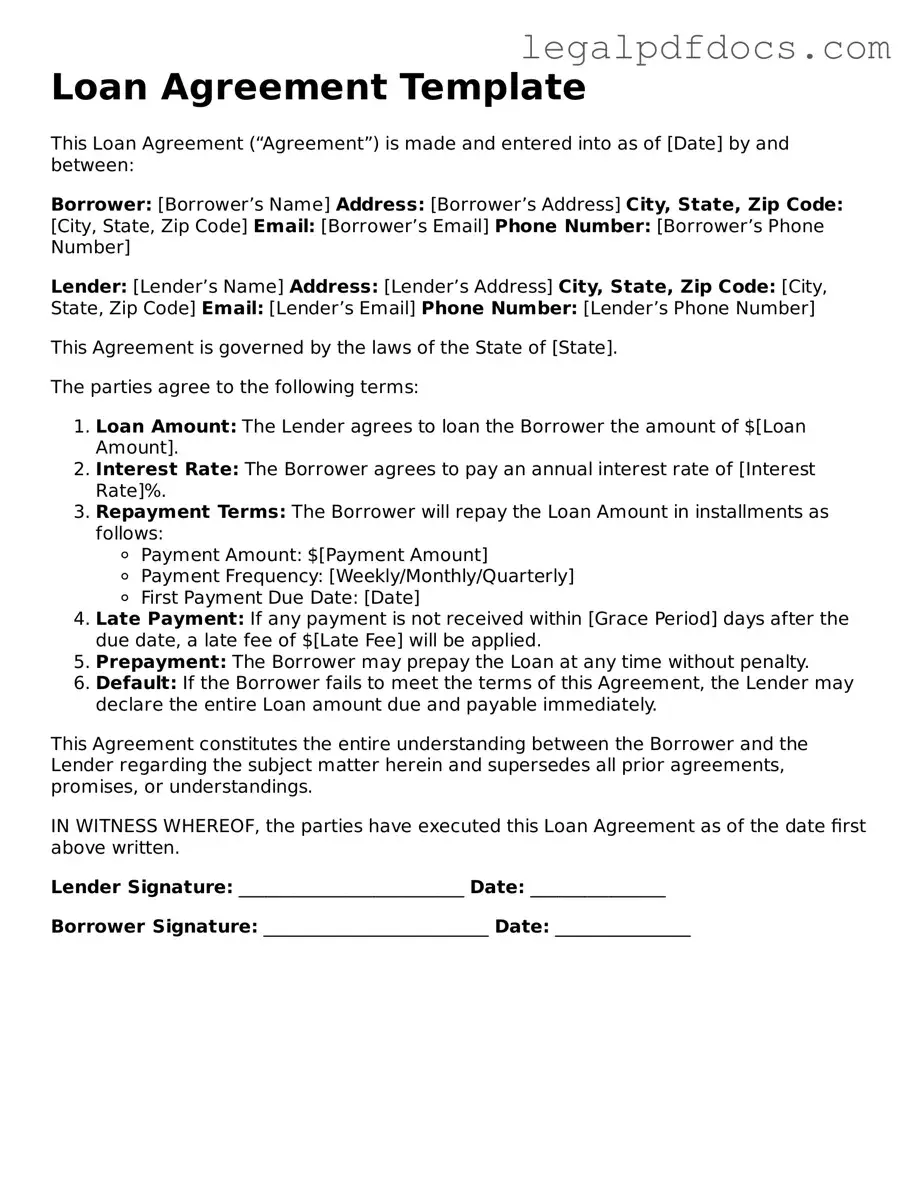Loan Agreement Template
A Loan Agreement form is a legal document that outlines the terms and conditions of a loan between a lender and a borrower. This form ensures that both parties understand their rights and obligations, providing clarity and protection in the lending process. Ready to secure your loan? Fill out the form by clicking the button below.
Open Loan Agreement Editor Here
